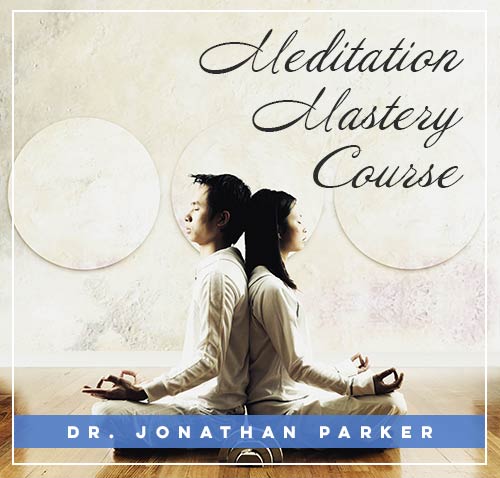Silent Meditation: Pathway to Unity Consciousness

Hey there, amazing readers! 🖐️ Just a quick note: yes, we know there are a lot of ads here. Trust us, we get it—it’s not the prettiest look, but they help us keep this blog alive and kicking. Those pesky little ads cover the costs of all the behind-the-scenes magic, from hosting and tech stuff to creating content we hope you’ll love.
We’re committed to delivering quality posts, and your support (even just sticking around despite the ads) means everything to us. So, bear with us, and thanks for helping us keep the good vibes rolling. Now, on to the fun stuff! 😉
TRANSLATE BUTTON AT THE END OF THE ARTICLE
A Quick Overview: Understanding Silent Meditation
Silent meditation is a practice that involves sitting quietly and focusing the mind on a single point of awareness, such as the breath, a mantra, or a visual object.
This ancient technique has been used for centuries as a way to cultivate inner peace, clarity, and spiritual growth.
By turning our attention inward and quieting the chatter of the mind, we can access deeper levels of consciousness and connect with our true essence.
Silent meditation is not about emptying the mind of thoughts but rather observing them without judgment and allowing them to pass without getting caught up in them.
The Origins of Silent Meditation
Silent meditation has roots in various spiritual traditions, including Buddhism, Hinduism, and Taoism.
In Buddhism, silent meditation is known as Vipassana or mindfulness meditation, where practitioners observe their thoughts and sensations without attachment.
In Hinduism, silent meditation is often practiced alongside yoga as a way to still the mind and connect with the divine.
Taoist meditation focuses on cultivating inner energy and aligning with the flow of the universe.
Regardless of the tradition, silent meditation has been used as a tool for self-discovery, inner peace, and spiritual awakening for thousands of years.
Benefits of Practicing Silent Meditation
The benefits of practicing silent meditation are wide-ranging and well-documented.
Some of the key advantages include:
Stress reduction: Silent meditation helps calm the nervous system and lower cortisol levels, reducing stress and anxiety.
Improved focus and concentration: By training the mind to stay present, silent meditation enhances cognitive function and attention span.
Emotional regulation: Regular practice of silent meditation allows individuals to observe their emotions without reacting impulsively, leading to greater emotional intelligence.
Increased self-awareness: Silent meditation helps individuals become more in tune with their thoughts, feelings, and bodily sensations, fostering self-discovery and personal growth.
Enhanced spiritual connection: By quieting the mind and delving into deeper states of consciousness, silent meditation can facilitate a sense of unity with the universe and higher spiritual realms.
Techniques for Silent Meditation
There are various techniques for practicing silent meditation, each with its own unique approach.
Some common techniques include:
Breath awareness: Focusing on the inhalation and exhalation of the breath to anchor the mind in the present moment.
Mantra repetition: Silently repeating a word or phrase to quiet the mind and cultivate inner peace.
Body scan: systematically bringing awareness to each part of the body, releasing tension and promoting relaxation.
Visualization: Imagining a peaceful scene or a symbol to evoke feelings of tranquility and connectedness.
Open monitoring: Observing thoughts, emotions, and sensations as they arise without judgment or attachment.
The Role of Breathwork in Silent Meditation
Breathwork plays a crucial role in silent meditation as it serves as a focal point for the mind.
By directing our attention to the rhythm of our breath, we can anchor ourselves in the present moment and cultivate mindfulness.
The breath is also intimately connected to our emotions and stress levels, so by regulating our breathing patterns through silent meditation, we can promote relaxation, reduce anxiety, and enhance overall well-being.
Conscious breathing techniques, such as deep belly breathing or alternate nostril breathing, can be incorporated into silent meditation practice to deepen the connection between the mind and body.
Cultivating Unity Consciousness Through Silence
Silent meditation is a powerful tool for cultivating unity consciousness, the awareness of our interconnectedness with all beings and the universe.
By quieting the mind and delving into the depths of our being, we can transcend the illusion of separation and experience a sense of oneness with everything around us.
Through silent meditation, we can tap into the universal field of consciousness and recognize that we are all expressions of the same divine essence.
This realization can lead to profound shifts in perception, fostering compassion, empathy, and a deep sense of interconnectedness with all of creation.
Overcoming Challenges in Silent Meditation
While silent meditation offers numerous benefits, it can also present challenges for beginners and experienced practitioners alike.
Some common obstacles include:
Restlessness: It’s natural for the mind to wander during meditation, but with practice, one can learn to gently bring the focus back to the present moment.
Impatience: Progress in silent meditation takes time and dedication, so it’s important to practice patience and persistence.
Physical discomfort: Sitting still for an extended period can cause discomfort, but finding a comfortable posture and using cushions or chairs can alleviate this issue.
Expectations: Letting go of expectations and embracing the process of meditation without judgment is essential for a fruitful practice.
Consistency: Establishing a regular meditation routine can be challenging, but setting aside time each day for silent practice is crucial for reaping the benefits.
Scientific Evidence Supporting Silent Meditation
Numerous scientific studies have demonstrated the positive effects of silent meditation on the mind and body.
Research has shown that regular meditation practice can:
Reduce symptoms of anxiety, depression, and PTSD.
Improve cognitive function, memory, and attention.
Lower blood pressure and reduce the risk of heart disease.
Enhance emotional regulation and increase compassion and empathy.
Promote neuroplasticity and improve brain structure and connectivity.
These findings support the efficacy of silent meditation as a powerful tool for promoting overall health and well-being.
Silent Meditation and Brain Health
Silent meditation has profound effects on brain health, influencing various regions of the brain associated with attention, memory, emotion regulation, and self-awareness.
Regular practice of silent meditation has been shown to increase gray matter density in areas involved in cognitive function and emotional regulation, such as the prefrontal cortex and hippocampus.
Meditation also reduces activity in the default mode network, the brain’s "autopilot" mode responsible for mind-wandering and self-referential thoughts.
By quieting the default mode network through silent meditation, individuals can experience increased focus, presence, and mental clarity.
Integrating Silent Meditation into Daily Life
To fully benefit from silent meditation, it’s essential to integrate the practice into daily life.
Here are some tips for incorporating meditation into your routine:
Establish a regular practice: Set aside a specific time each day for silent meditation, whether it’s in the morning, during lunch break, or before bedtime.
Create a dedicated space: Designate a quiet and comfortable space for meditation, free from distractions and clutter.
Start small: Begin with short meditation sessions and gradually increase the duration as you build consistency and comfort.
Be patient and compassionate: Approach meditation with an open heart and a non-judgmental attitude, allowing yourself to be present with whatever arises.
Use guided meditation: If you’re new to silent meditation, consider using guided meditation apps or recordings to help you stay focused and engaged.
Exploring Different Traditions of Silent Meditation
Silent meditation is practiced in various traditions worldwide, each offering a unique approach to cultivating inner peace and spiritual growth.
Some popular traditions of silent meditation include:
Zen meditation: A form of silent meditation rooted in Zen Buddhism, focusing on breath awareness and sitting in stillness to cultivate mindfulness and insight.
Vipassana meditation: A mindfulness practice originating from the Theravada Buddhist tradition, emphasizing silent observation of thoughts, emotions, and bodily sensations.
Christian contemplative prayer: A silent meditation practice found in Christian mysticism, involving silent communion with the divine and listening for the voice of God within.
Transcendental Meditation (TM): A technique popularized by Maharishi Mahesh Yogi, involving silent repetition of a mantra to access deeper states of consciousness and inner peace.
Yoga Nidra: A form of guided meditation originating from the yoga tradition, focusing on deep relaxation and conscious awareness to promote healing and self-discovery.
Conclusion: Embracing Unity Consciousness Through Silence
Silent meditation offers a powerful pathway to unity consciousness, allowing individuals to transcend the limitations of the ego and connect with the universal field of consciousness.
By quieting the mind, observing our thoughts without attachment, and delving into the depths of our being, we can experience a profound sense of interconnectedness with all of creation.
Through regular practice of silent meditation, we can cultivate inner peace, clarity, and spiritual growth, leading to a profound transformation in our perception of self and the world around us.
Embracing unity consciousness through silence is not just a personal journey but a collective awakening to the truth of our oneness with all beings and the universe.

The Enlightenment Journey is a remarkable collection of writings authored by a distinguished group of experts in the fields of spirituality, new age, and esoteric knowledge.
This anthology features a diverse assembly of well-experienced authors who bring their profound insights and credible perspectives to the forefront.
Each contributor possesses a wealth of knowledge and wisdom, making them authorities in their respective domains.
Together, they offer readers a transformative journey into the realms of spiritual growth, self-discovery, and esoteric enlightenment.
The Enlightenment Journey is a testament to the collective expertise of these luminaries, providing readers with a rich tapestry of ideas and information to illuminate their spiritual path.
Our Diverse Expertise 🌟
While our primary focus is on spirituality and esotericism, we are equally passionate about exploring a wide range of other topics and niches 🌍📚. Our experienced team is dedicated to delivering high-quality, informative content across various subjects ✨.
To ensure we provide the most accurate and valuable insights, we collaborate with trusted experts in their respective domains 🧑🏫👩🏫. This allows us to offer well-rounded perspectives and knowledge to our readers.
Our blog originally focused on spirituality and metaphysics, but we’ve since expanded to cover a wide range of niches. Don’t worry—we continue to publish a lot of articles on spirituality! Frequently visit our blog to explore our diverse content and stay tuned for more insightful reads.





















